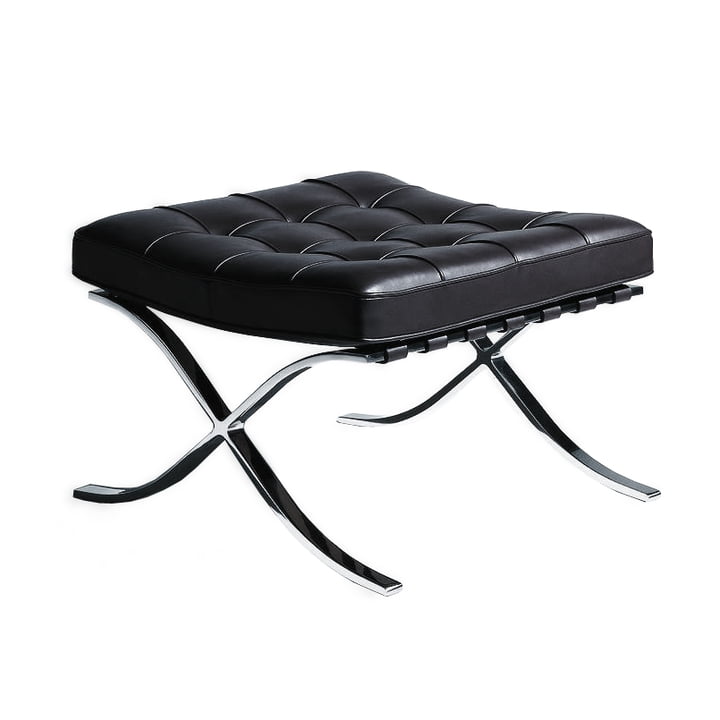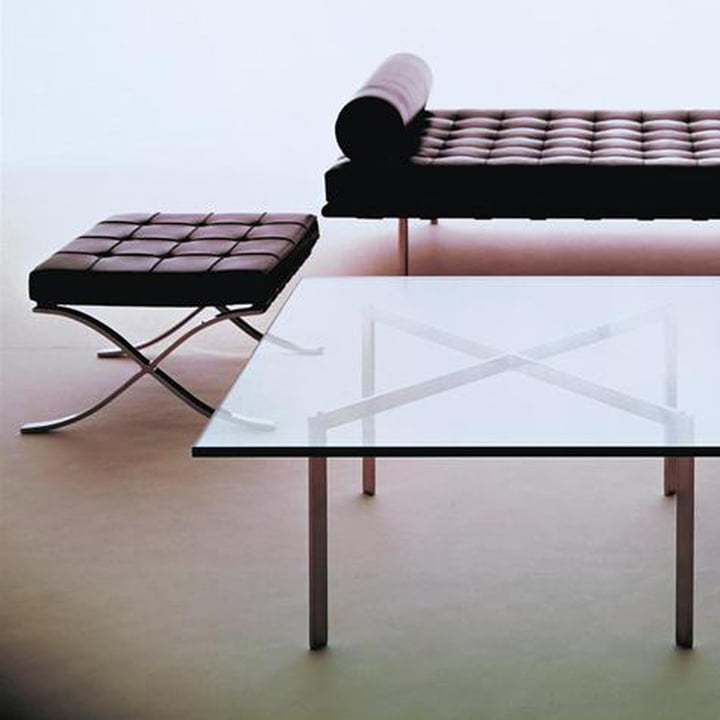The seating furniture that was designed at the end of the 20s for the German Pavilion at the World Expo in Barcelona, earns the name “classic”. On one hand because the ensemble of the bright pavilion made the overcooled style of living: later called the “International Style” known worldwide. On the other hand, because there are historic references to antiquity. Arguably Greek folding chairs (scissors chair or or driving chairs as thrones for gods and monarchs) served as inspiration. This is to some extent about a modern age throne (non-foldable).
In reality, the furniture for the Barcelona Pavillion had already fulfilled highly representative purposes in their original context: They were to serve as royal chairs during the opening ceremony of the World Expo in Barcelona.
This concept is in opposition to the social, even socialist aims, which were represented by many protagonists of the “New Building” at that time. Ludwig Mies van der Rohe used band steel and leather upholstery in a celebratory white at the World Expo. The Barcelona stool was a luxury piece of furniture and moreover hardly suitable for the series. The frame had to be laboriously welded by hand, which meant that the stool could only be produced in a changed version from 1948 onwards. However, it is an extremely innovative design which has expanded the repertoire of the classic modern.
More details:
- Features: A signed piece of KnollStudio furniture which is produced according to the original specifications from Mies van der Rohe. The designer gave Knoll the exclusive production and marketing rights in 1953. A children’s version of the Barcelona Stool is also available. The KnollStudio logo and the signature of Ludwig Mies van der Rohe are embossed into each piece of furniture. - Production:
The chrome frame is hand-polished to a high gloss. Each cushion is made from 16 individual pieces of leather, cut by hand from a single hide, sewn by hand and finished with piping and buttons. The visible side of the belt is dyed to suit the upholstery. - Surfaces:
Available in different Spinneybeck leathers. The frame has been chrome-plated and polished. - Prizes: MoMa (Museum of Modern Art), 1977.




